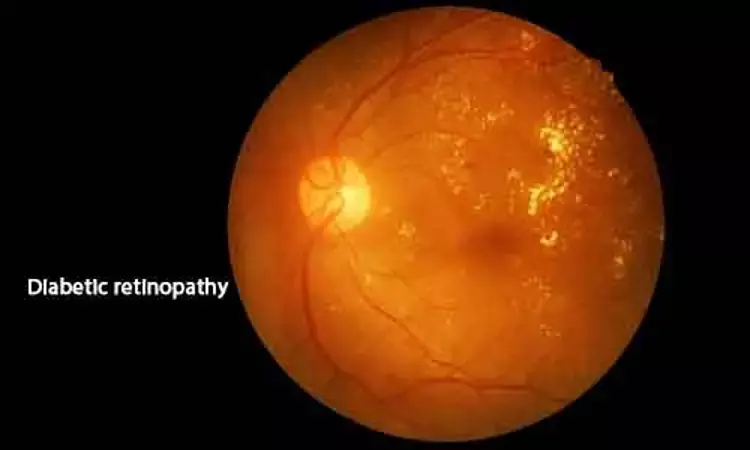- Home
- Medical news & Guidelines
- Anesthesiology
- Cardiology and CTVS
- Critical Care
- Dentistry
- Dermatology
- Diabetes and Endocrinology
- ENT
- Gastroenterology
- Medicine
- Nephrology
- Neurology
- Obstretics-Gynaecology
- Oncology
- Ophthalmology
- Orthopaedics
- Pediatrics-Neonatology
- Psychiatry
- Pulmonology
- Radiology
- Surgery
- Urology
- Laboratory Medicine
- Diet
- Nursing
- Paramedical
- Physiotherapy
- Health news
- Fact Check
- Bone Health Fact Check
- Brain Health Fact Check
- Cancer Related Fact Check
- Child Care Fact Check
- Dental and oral health fact check
- Diabetes and metabolic health fact check
- Diet and Nutrition Fact Check
- Eye and ENT Care Fact Check
- Fitness fact check
- Gut health fact check
- Heart health fact check
- Kidney health fact check
- Medical education fact check
- Men's health fact check
- Respiratory fact check
- Skin and hair care fact check
- Vaccine and Immunization fact check
- Women's health fact check
- AYUSH
- State News
- Andaman and Nicobar Islands
- Andhra Pradesh
- Arunachal Pradesh
- Assam
- Bihar
- Chandigarh
- Chattisgarh
- Dadra and Nagar Haveli
- Daman and Diu
- Delhi
- Goa
- Gujarat
- Haryana
- Himachal Pradesh
- Jammu & Kashmir
- Jharkhand
- Karnataka
- Kerala
- Ladakh
- Lakshadweep
- Madhya Pradesh
- Maharashtra
- Manipur
- Meghalaya
- Mizoram
- Nagaland
- Odisha
- Puducherry
- Punjab
- Rajasthan
- Sikkim
- Tamil Nadu
- Telangana
- Tripura
- Uttar Pradesh
- Uttrakhand
- West Bengal
- Medical Education
- Industry
Children with type 2 diabetes at higher risk of developing retinopathy than those with T1D: JAMA

USA: Findings from a recent study in the journal JAMA Ophthalmology suggest that children with (T2D) are at a higher risk of developing retinopathy compared to those with type 1 diabetes (T1D). This study suggests the need for earlier surveillance and intervention for preventing vision-threatening complications in children with T2D.
The prevalence of T2D diagnosis in childhood is increasing. Despite this, not much is known about the natural history of ocular sequelae in youth-onset T2D compared with T1D. To shed some light on the topic, Patricia Bai, Alix School of Medicine, Mayo Clinic, Phoenix, Arizona, and colleagues aimed to assess the risk of developing diabetes-associated ocular complications (DAOC) among a population-based cohort of children diagnosed with either T1D or T2D during a 50-year period in a retrospective, population-based medical record review.
The review included all residents of Olmsted County, Minnesota (95.7% White in 1990), diagnosed with diabetes at younger than 22 years (hereinafter referred to as children) from January 1, 1970, through December 31, 2019. The main outcome was a risk of developing ocular complications over time.
Among 1362 individuals with a diagnostic code of diabetes, medical record reviews confirmed a diagnosis of T1D or T2D in 606 children, of whom 525 (86.6%) underwent at least 1 eye examination (mean age at diabetes diagnosis, 12.1 years; 264 [50.3%] male).
Following were the study's key findings:
- Diabetes-associated ocular complications occurred in 147 of the 461 children (31.2%) with T1D and in 17 of the 64 children (26.6%) with T2D.
- The hazard ratio illustrating the risk between T2D and T1D rates was 1.88 for developing any diabetic retinopathy (nonproliferative or greater), 2.33 for proliferative diabetic retinopathy, 1.49 for diabetic macular edema, 2.43 for a visually significant cataract, and 4.06 for requiring pars plana vitrectomy by 15 years after the diagnosis of diabetes.
"Children with T2D had almost twice the risk of developing retinopathy compared with those with T1D," wrote the authors.
"These findings suggest that to prevent serious ocular complications, children with T2D may require ophthalmoscopic evaluations at least as frequently as or more frequently than children with T1D," they concluded.
Reference:
Bai P, Barkmeier AJ, Hodge DO, Mohney BG. Ocular Sequelae in a Population-Based Cohort of Youth Diagnosed With Diabetes During a 50-Year Period. JAMA Ophthalmol. Published online December 02, 2021. doi:10.1001/jamaophthalmol.2021.5052
Dr Kamal Kant Kohli-MBBS, DTCD- a chest specialist with more than 30 years of practice and a flair for writing clinical articles, Dr Kamal Kant Kohli joined Medical Dialogues as a Chief Editor of Medical News. Besides writing articles, as an editor, he proofreads and verifies all the medical content published on Medical Dialogues including those coming from journals, studies,medical conferences,guidelines etc. Email: drkohli@medicaldialogues.in. Contact no. 011-43720751


